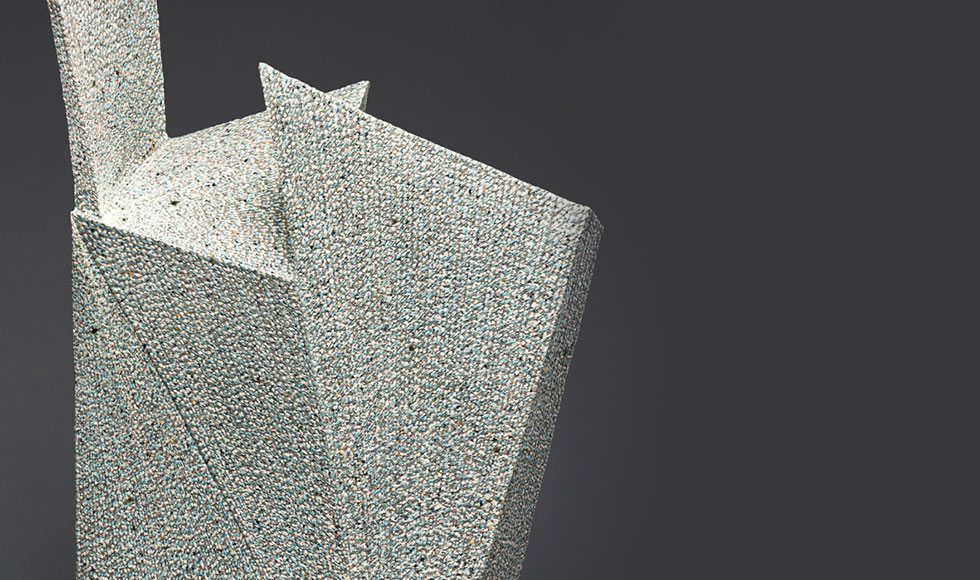The Sculptural Turn: Contemporary Japanese Ceramics from the Kempner and Stein Collection is organized by the Asian Art Museum.
Reduced admission now through September — some galleries temporarily closed. Learn more…
Reduced admission now through September — some galleries temporarily closed. Learn more…
Reduced admission now through September — some galleries temporarily closed. Learn more…
Contemporary Japanese artists are taking a number of turns—from functional forms, from apprenticeships, from traditional materials, and from exclusively male production—to shape sculptural ceramics.
Contemporary Japanese artists are taking a number of turns—from functional forms, from apprenticeships, from traditional materials, and from exclusively male production—to shape sculptural ceramics.
The Sculptural Turn showcases the work of fourteen Japanese clay artists, all born after World War II, whose work expands on early twentieth-century experimental forms. Unlike previous generations of Japanese potters who learned exclusively from master craftsmen, these artists studied in universities and in many cases came to ceramics after exploring other fields. They are masters of technique, material, and concept. Their practices are informed by various cosmopolitan sources, even when they are part of a longstanding family lineage or regional tradition. Drawn together by collectors with an eye for abstract, minimalist, and expressionistic contemporary art, this exhibition tells a story of the changing character of clay in Japan.
View The Sculptural Turn micrositeThe diverse artists featured in this exhibition bring their unique skills and visions to their work. Miwa Kazuhiko is from a celebrated family of Hagi potters but was inspired by the American ceramic artist Peter Voulkos. Kondo Takahiro uses geometric minimalism and incorporates glass to achieve a technically innovative glaze he calls “silver mist.” Mihara Ken creates purely sculptural works in the tradition of sekki, a high-fired, unglazed ceramic made of clay from his native city of Izumo in Shimane prefecture. Kato Tsubusa, a lifelong ceramicist, has veered away from using native clay and instead works with New Zealand kaolin, a particularly unforgiving material.
The Sculptural Turn highlights some of Japan’s leading female potters who comprise the first generation of women to distinguish themselves in a traditionally male field. In addition to showcasing the work of female living masters, it includes two of Japan’s rising young stars, Hattori Makiko and Fujikasa Satoko, who create expressive and technically complicated works in porcelain and Shigaraki stoneware from Shiga prefecture, respectively. Kishi Eiko creates austere, angular work that resembles cut stone or molded concrete, an effect achieved by kneading together raw clay with crushed fired clay, forming slabs into forms by hand, then perforating the clay using knives and needles. Koike Shoko creates vessels inspired by marine life, formed from many layers of Shigaraki clay and two layers of glaze that is raked to create an irregular surface. Sakurai Yasuko works in porcelain, creating sculptural pieces that incorporate light, shadow, and void into their composition. Katsumata Chieko creates ceramic forms that are inspired by sea life and plant and mineral forms, often colored with metallic pigment. In her Tentacled Sea Flower (2013), her coral-like forms are rendered in white, one of the pale hues common to the works in this exhibition from the collection formed by Dr. Phyllis A. Kempner and Dr. David D. Stein of San Francisco over the past fifteen years.

Top image: Kei (Mindscape) (detail), 2014, by Mihara Ken (Japanese, b. 1958). Multifired stoneware. Collection of Dr. Phyllis A. Kempner and Dr. David D. Stein. © Mihara Ken. Photograph © Asian Art Museum.
Bottom image: Untitled (detail), 2007, by Kishi Eiko (Japanese, b. 1948). Stoneware with colored clay inlays. Collection of Dr. Phyllis A. Kempner and Dr. David D. Stein. © Kishi Eiko. Photograph © Asian Art Museum.
The Sculptural Turn: Contemporary Japanese Ceramics from the Kempner and Stein Collection is organized by the Asian Art Museum.